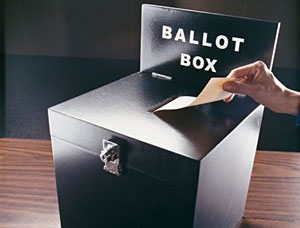Crowdsourcing the vote
January 26, 2012
How do you design a secure, reliable, accessible system of voting for a place with 4.3 million voters, 4,500 polling places, 10 languages and more square mileage than two Delawares?
That’s the challenge as Los Angeles County works to update its aging voting system in time for the 2015 elections. Fortunately, a 21st-century innovation—crowdsourcing—just made the job easier.
In a novel approach that is being closely watched by local governments around the nation, the county this week put out the call for public input on how to improve L.A.’s system of voting.
No suggestion is too large or too small, amateurs are as welcome as experts and even off-the-cuff brainstorms are welcome, says Registrar-Recorder/County Clerk Dean Logan.
Anyone with an inspiration, from shorter ballots to voting by cell phones, can respond before March 22 by searching for the accessible elections challenge at www.openideo.com or by clicking here.
“This is just to get peoples’ creative juices going,” Logan says.
The initiative is part of a larger movement to make elections more secure and participatory in the information age. For more than two years, the county has been laying the groundwork for an overhaul of its voting system, the core of which dates to 1968, when the county installed a then-state-of-the-art punch-card system to count ballots.
“Our current system has served us well and with integrity, but the vote-tallying system is based on outdated software,” says Logan. “It’s difficult to get parts and maintenance, some of the equipment isn’t even made anymore, the card readers are becoming obsolete and on the software side, the language doesn’t have the flexibility to be modified.”
Los Angeles County is so vast that none of the commercially available voting systems now on the market can accommodate it, says Logan. Touch-screen voting machines have raised security concerns, he says, and tend to be expensive and logistically unwieldy in a county with 4,500 polling places. Meanwhile, existing paper-based systems being used in other jurisdictions present their own sets of problems when they’re forced to accommodate a system with millions of voters speaking multiple languages and spread across more than 4,000 square miles.
The county had already gone back to the drawing board, surveying poll workers, city clerks, tech experts, stakeholders, vendors, scholars and, of course voters, when Logan was approached several months ago by a federally funded voting project and asked to participate in a so-called “open-innovation challenge” aimed at creating a voting system that would be universally accessible by voters regardless of literacy, language or disability.
The result, he says, was an opportunity to cast a wide net for ideas while continuing the county’s own efforts. The Accessible Voting Technology Initiative, underwritten by a grant from the U.S. Elections Assistance Commission and issued by the county and the Washington, D.C.-based Information Technology and Innovation Foundation, will take input from anyone with an idea.
Logan says the county faces a number of challenges in developing its own system; for one thing, federal and state regulators will have to approve any system that is developed. Also state legislation will have to be tweaked for the county to spend money on anything but a system now on the commercial market.
“We hope this challenge will accelerate the idea process,” says Logan. “By the end of summer—and granted, by then we’ll be doing the 2012 elections—we hope by then we might even have some prototypes.”
Posted 1/26/11













 405 bridge work causes a stink
405 bridge work causes a stink
